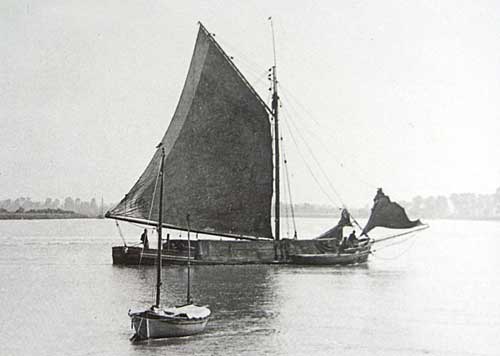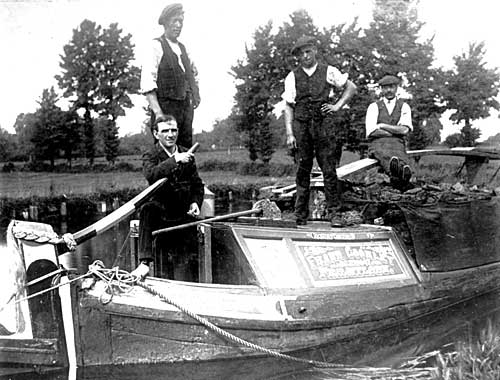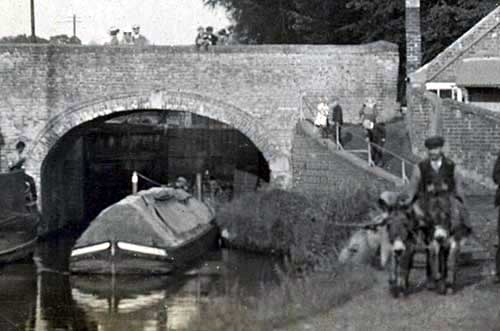Vessels using the Stroudwater Canal were of three main types, relating to which other waterways each vessel could use: wide barges, narrower barges and boats. Most were built, owned and crewed by local men. Some vessels were described as trows, but the precise distinction between the terms barge and trow has become lost.


All barges had an open hold with a small cabin at the stern, a flat bottom and dimensions less than 70ft long and 15ft 6in wide to fit the Stroudwater locks. They typically had a single mast and carried a gaff-rigged mainsail with a foresail and a jib in front of the mast (although in the early days, they had a square rig). These traded around the Severn estuary and Bristol Channel and could also pass along the Thames & Severn Canal as far as Brimscombe.
Narrower barges (given the name Stroud barges by historians) had a similar rig but were only up to 12ft 6in wide and so could pass through the narrower locks of the Thames & Severn Canal east of Brimscombe. These regularly carried coal from Bullo Pill to places along the Stroud valley, some going over the Cotswolds to the Thames valley.


Boats (now usually called narrowboats) also had an open hold with a small cabin at the stern and a flat bottom, but they were only 7ft wide to suit the narrow locks of the Midland canals. They came into general use on the Stroudwater and Thames & Severn Canals after the opening of the Gloucester & Berkeley Canal in 1827 which provided a safe route between the Stroud valley and the Severn above Gloucester. Their main role was to collect coal from the Midlands, carrying whatever outward cargo was available, and they also travelled eastwards over the Cotswolds to Wiltshire and the Thames valley. For an account of such trips in the 1880s, read William Staddon.
In the very early days, most vessels using the Stroudwater Canal came from places up and down the River Severn, but it was not long before local men had their own vessels built, and this eventually became the norm. Most local owners just had one vessel or possibly two, while a few managed to build up a fleet. Some owners only carried for other people, while others were coal merchants or mill owners carrying their own cargoes. Crews for the barges trading down the Severn were mainly recruited from riverside villages such as Frampton, Fretherne and Saul, while crews for the boats came from settlements along the valley, particularly Chalford. A bye-law required that every vessel should have at least three able persons attending it, but this was not always enforced for boats. For a study about the principal traders using the Stroudwater Canal, read Principal Traders. For the story of one principal trader, read John George.


Although barges had sails for use on the Severn, these had to be lowered to pass under the many bridges along the canal, and a short towing mast was set up to which a tow rope was attached. In the early days, vessels were towed by men - until a proper horse towing path was established circa 1827. A bye-law then specified a minimum height for a towing animal, but in later years it became common for vessels to be towed by a pair of donkeys, and the bye-law was eventually repealed.
When any vessel was using the canal, its crew were expected to follow rules and bye-laws that were intended to minimise obstruction to other users, avoid damage to structures and limit wastage of water. These included restricting use of the canal to between sunrise and sunset (and not at all on Sundays), requiring each vessel to have a crew of at least three, and specifying penalties for improper use of locks and swivel bridges. Offenders were usually given the option of paying a nominal fine or being taken to court for a higher penalty.
Most local vessels were built at the Bourne, near Brimscombe, at Saul Junction or at Framilode, but other sites were also used for individual launches. For repairing vessels, there were dry docks at the Bourne, Eastington and Saul Junction.
Information about Vessels and Owners during the operational period up to 1941 can be found by searching the Minute Book and Letter Book pages in the Archives section of this website. Additionally, a list of relevant documents that can be consulted at Gloucestershire Archives can be found in the Subject Listings page under the heading Vessels and Owners.
Found in the Archive
When a fly boat in a hurry demolished a gate at Dudbridge Lock in 1836, the Stroudwater Company demanded payment for the cost of a new gate, but the boat's owner refused to pay as he discovered that the gate had been damaged by another boat two years earlier and that a scheduled repair had not been carried out. (D1180/9/2)